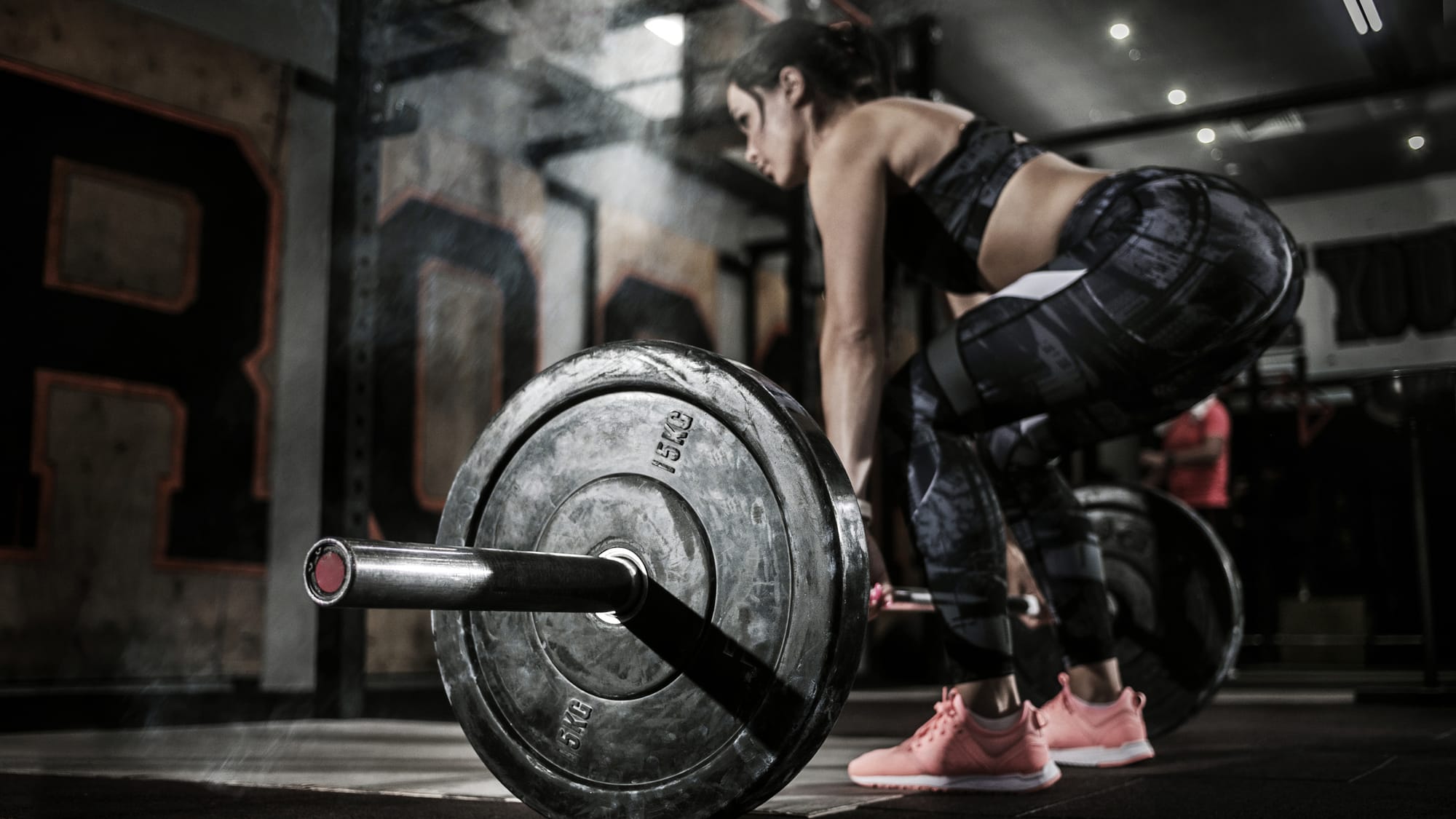We examined whether science can reliably track changes in tendon size and stiffness HERE, and discussed if adults can build bone previously HERE. In today’s article, we will dive into whether it is possible for trained individuals to grow additional tendon mass through resistance training methodologies.
A 2022 meta-analysis by Lazarczuk and colleagues [1] that included 61 studies and 763 subjects found that training interventions produced moderate increases in tendon stiffness, large increases in Young's modulus (ratio of tensile stress to tensile strain), and small increases in tendon cross-sectional area (CSA), and only high-intensity eccentric contractions produced a clear increase in tendon CSA.
Resistance training interventions appeared to produce greater increases in Young's modulus and stiffness metrics, but when resistance training was utilized inside of concurrent training interventions there did not appear to be any significant tendon adaptations. The researchers also commented that “only three studies recruited well-trained athletes all of which displayed no change in tendon stiffness even following high-intensity training. As such, caution should be applied to directly applying the findings of this review to highly trained populations.”
Thus, in order to thoroughly investigate the current available literature on this question we will individually go through these three studies and any other additional studies on tendon size and/or function in highly-trained athlete populations from the last decade.
Increased fascicle length but not patellar tendon stiffness after accentuated eccentric-load strength training in already-trained men by Walker et al., 2020 [2]
This 10-week study included 28 males with an average of 2.6 years of strength training experience. Subjects were allocated to one of three groups a classic control that continued their normal resistance training without supervision, a traditional (TRAD) group that used the same load for the concentric and eccentric portion of the lift, and an accentuated eccentric (AEL) group that increased the eccentric load by 40% over the concentric loading for lower body exercises or a control group that continued their normal training. The subjects in the TRAD and AEL groups trained Leg Press, Knee Extensions, and Hamstring Curls twice a week. One session was at a 6RM loads and one was at 10RM loads. The researchers did not assess patellar tendon size or length, but there were no statistically significant changes in patellar tendon stiffness in any group.
Effects of Heavy Strength Training on Running Performance and Determinants of Running Performance in Female Endurance Athletes by Vikmoen et al., 2016 [3]
This 11-week study looked at the effect of adding strength training to a running program in 28 well-trained female endurance athletes (VO2 max = 53 ± 3 ml∙kg-1∙min-1). Subjects in the strength training group trained the half squat in a Smith machine, unilateral leg press, standing one-legged hip flexion in a cable cross machine, and ankle plantar flexion in a Smith machine twice per week. Loads were between a 10 and 4RM throughout the 11 weeks. The athletes were also encouraged to perform their strength training and endurance work on separate days.
After 11 weeks, body weight did not change, but both type I and type II muscle fiber area of the vastus lateralis increased by 13.2 and 30.8%, respectively in the endurance and strength training group (E+S), but not the endurance training only group (E). Maximal jump, CMJ, and 1RM leg press also increased by 8.9, 5.9, and 40.4% respectively in the E+S group, but not the endurance training only group. There were no significant changes in running economy or the 40 min all-out test in either group.
There were no significant changes in patellar tendon stiffness or Young’s modulus, but the mean CSA of the patellar tendon increased by 5.2% in the E+S group, but not the E only group. It is important to note that this study population was highly trained from the endurance perspective, but was naïve to strength training.
Changes in tendon stiffness and running economy in highly trained distance runners by Fletcher et al., 2010 [4]
This 8-week study took 12 highly trained male distance runners and added thrice a week training of 4 sets of 20-second isometric contractions at 80% of maximum voluntary plantarflexion. After eight weeks there was no statistically significant change in triceps-surae tendon stiffness. Tendon size or length was not assessed. Again, although these subjects were highly trained in the endurance realm, but naïve to strength training.
Collagen supplementation augments changes in patellar tendon properties in female soccer players by Lee et al., 2023 [5]
This was a 10-week study of high-level female soccer players in-season. All subjects performed the same training and soccer game schedule while the collagen group received 30 grams of collagen hydrolysate and the placebo group received a calorie-matched carbohydrate containing “electrolyte”. The subjects did not perform prototypical repetition effort resistance training, but bodyweight strength exercises and plyometrics which included, isometric split squats, banded sissy squats, Nordic hamstring curls, Reverse Nordics, countermovement jumps, broad jumps, as well as different hops and acceleration drills (further details can be found HERE). The researchers also tracked running (7.5 to ~12 mph), sprinting (>12 mph), and distance covered during games and practices via GPS throughout the 10 weeks (further details can be found HERE).
After 10 weeks neither group significantly increased patellar tendon CSA or length and neither group showed a significant increase in vastus lateralis muscle thickness. However, the collagen supplement group did show a statistically significant greater increase in patellar tendon stiffness and Young’s modulus compared to the placebo after 10 weeks. The authors do state that “the intensity of training in the current study was probably insufficient to induce tendon hypertrophy.”
An Examination of Two Resistance Training Frequency Techniques in Morphological and Functional Adaptations of the Patellar Tendon by Braz et al., 2022 [6]
This study utilized a within-subject unilateral study design in 27 recreationally resistance-trained young subjects with an average self-reported resistance training experience of 3.3 ± 1.6 years. This may blow your mind, but subjects performed 12 sets of knee extensions at an 8–12RM to muscular failure with one minute rest between sets either twice or four times per week. The four times per week group trained for a total of four weeks and the twice a week group trained for eight weeks. That equates to 24 sets per week for eight weeks or 48 sets per week for four weeks.
Patellar tendon length and CSA were measured via ultrasound pre and post-intervention and subjects were asked not to perform any type of physical activity for 72 hours before data collection. No statistically significant changes at the group level were found in for either training frequency for either patellar tendon CSA or length. However, around one-third of participants did increase their CSA beyond the smallest worthwhile change of the ultrasound methodology. Both training frequencies showed an increase in patellar tendon force calculated by dividing the 1RM test by the external moment arm. However, the twice-weekly frequency showed higher increases in patellar tendon force outputs.
“The previous resistance training experience of the current study’s participants should be considered as intermediate or advanced. As such, an increase in morphological findings may be diminished due to a lower potential for adaptations with the current intensity and load prescribed. In other words, the individuals who participated in the current study may have previously undergone morphological adaptations to their patellar tendon in the early beginner stages of their resistance training experiences.” Braz et al., 2022 [6]
I initially could not find any hypertrophy outcomes from this study published in the peer-reviewed literature so I messaged the first author to see if they measured any quadriceps muscle thickness or CSA values in this study and if so if those results were published anywhere. Dr. Braz got back to me and the results were published HERE, but not indexed on pubmed. Hypertrophy of the quadriceps was had.
"The main finding of this study was that performing 16 training sessions in a more concentrated (4x) or more distributed (2x) fashion promotes a similar increase in morphofunctional outcomes...For muscle thickenss, both 2x and 4x results in similar increases for RF proximal (7.2% and 6.1%) and distal (7.1% and 6.2%), VL distal (11.3% vs 5.3%) and VI distal (medial) (15.4% vs 19.8%)...Although this study has consistently demonstrated that a higher RT volume/frequency is well tolerated with no detrimental effects, it is plausible that this greater TLL, when achieved through high RT volume/frequency protocol (4x), may culminate in detrimental effects if executed for a longer time frame (more than 4 weeks)." -Braz et al., 2022 [7]
TL;DR – It appears that only one study has really looked at the potential changes in tendon cross-sectional area from resistance training in strength-trained individuals. This four to eight-week study with higher volume knee extensions found significant growth in the quadriceps with no significant difference in patellar tendon area or length at the end of the trial. It appears that changes in size and the stiffness of tendons is possible in untrained individuals through isolated higher-intensity resistance training efforts. However, we need more research in strength-trained individuals to elucidate if continued changes can be made or if there is a ceiling effect. Given the likely small effect sizes in this particular population, it is seems advisable to track tendon size over longer periods of time with imaging technologies that maintain a higher degree of precision like MRI.
REFERENCES:
1. Lazarczuk, S.L., et al., Mechanical, Material and Morphological Adaptations of Healthy Lower Limb Tendons to Mechanical Loading: A Systematic Review and Meta-Analysis. Sports Med, 2022. 52(10): p. 2405-2429.
2. Walker, S., et al., Increased fascicle length but not patellar tendon stiffness after accentuated eccentric-load strength training in already-trained men. Eur J Appl Physiol, 2020. 120(11): p. 2371-2382.
3. Vikmoen, O., et al., Effects of Heavy Strength Training on Running Performance and Determinants of Running Performance in Female Endurance Athletes. PLoS One, 2016. 11(3): p. e0150799.
4. Fletcher, J.R., S.P. Esau, and B.R. MacIntosh, Changes in tendon stiffness and running economy in highly trained distance runners. Eur J Appl Physiol, 2010. 110(5): p. 1037-46.
5. Lee, J., et al., Collagen supplementation augments changes in patellar tendon properties in female soccer players. Front Physiol, 2023. 14: p. 1089971.
6. Braz, T.V., et al., An Examination of Two Resistance Training Frequency Techniques in Morphological and Functional Adaptations of the Patellar Tendon. Int J Exerc Sci, 2022. 15(4): p. 709-720.
7. Braz, T.V., et al., Muscle Architecture and Strength Changes Induced by Different Resistance Training Frequencies and Detraining. International Journal of Exercise Science, 2022. 15: p. 1661-1679.






Related Content
How Much Does Androgen Receptor Sensitivity Matter?
Nov 16, 2025
Is Training To Failure Worse Than Worthless?
Sep 19, 2025
Is Ultrasound Ready To Go Mainstream?
Jul 07, 2025